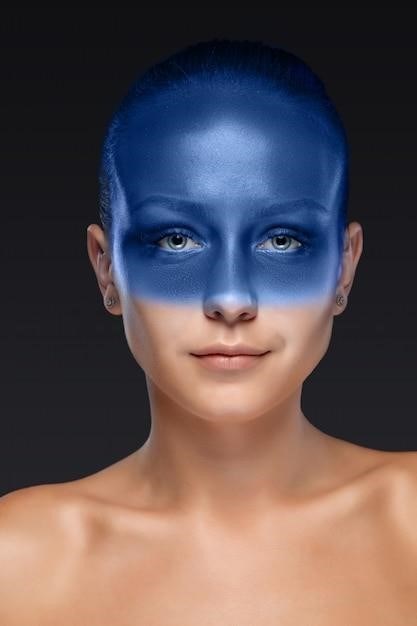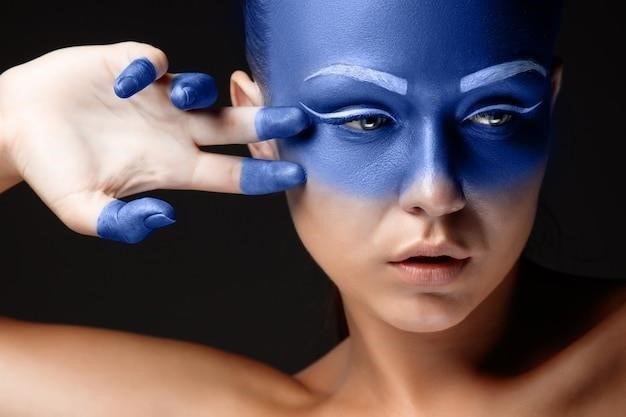The Bluest Eye⁚ A Toni Morrison Masterpiece
Toni Morrison’s debut novel‚ “The Bluest Eye‚” is a powerful and deeply affecting exploration of race‚ beauty‚ and identity in 1940s America. It tells the story of Pecola Breedlove‚ a young African-American girl who longs for blue eyes as a symbol of acceptance‚ and the devastating consequences of her desire. Morrison’s masterful prose and unflinching portrayal of racism and its impact on the lives of Black people have made “The Bluest Eye” a landmark work of American literature.
Overview of the Novel
Toni Morrison’s “The Bluest Eye” is a poignant and disturbing exploration of the devastating effects of racism and societal beauty standards on a young Black girl named Pecola Breedlove. Set in Lorain‚ Ohio during the 1940s‚ the novel follows Pecola as she navigates a world where whiteness is perceived as the ideal and Blackness is marginalized. Pecola’s yearning for blue eyes‚ a symbol of beauty and acceptance in a society that devalues her own features‚ becomes a driving force in the narrative.
Morrison weaves together multiple perspectives‚ including those of Pecola’s family‚ friends‚ and neighbors‚ to create a complex and layered portrait of the community. The novel delves into themes of abuse‚ trauma‚ and the internalization of racism‚ highlighting the ways in which society’s prejudices can shape individual identities and experiences. “The Bluest Eye” is a powerful testament to the enduring impact of racism and its ability to inflict deep psychological wounds.
Pecola Breedlove’s Yearning for Blue Eyes
At the heart of “The Bluest Eye” lies Pecola Breedlove’s yearning for blue eyes. It’s not just a desire for a physical change but a desperate hope for acceptance and validation in a society that equates whiteness with beauty. Pecola internalizes the messages she receives from her environment‚ leading her to believe that her Black features are inherently undesirable. She dreams of blue eyes‚ believing that they will transform her into someone beautiful‚ someone worthy of love and attention.
This longing for blue eyes becomes a symbol of Pecola’s internalized racism and the devastating impact of societal expectations. It represents her desire to escape the limitations imposed by her race and the constant reminders that she is not beautiful according to the dominant standards. Pecola’s yearning for blue eyes highlights the insidious nature of racism and its power to undermine self-esteem and distort perceptions of beauty.
Themes of Racism and Internalized Racism
“The Bluest Eye” delves deeply into the themes of racism and internalized racism‚ exposing the ways in which these forces shape the lives of Black people‚ particularly in the context of 1940s America. The novel unflinchingly portrays the pervasive racism faced by Black characters‚ from the blatant discrimination they encounter in their daily lives to the subtle yet insidious ways in which racist attitudes permeate their relationships and communities.
Internalized racism is a crucial element of the novel. Pecola’s yearning for blue eyes embodies this internalized racism‚ as she internalizes the societal messages that equate whiteness with beauty and desirability. The novel shows how internalized racism can lead Black people to internalize their oppressors’ views‚ leading to self-hatred and a sense of inadequacy.
Beauty Standards and Societal Expectations
One of the central themes of “The Bluest Eye” is the destructive impact of societal beauty standards‚ particularly those imposed on Black women. The novel exposes how a white-centric beauty ideal permeates American society‚ leading to the marginalization and devaluation of Black beauty. This is exemplified by Pecola’s yearning for blue eyes‚ her belief that only with this physical feature can she attain beauty and acceptance.
Morrison highlights the ways in which societal expectations can shape a person’s self-perception and lead to feelings of inadequacy. Pecola’s desire for blue eyes is not simply a personal preference but a reflection of the dominant beauty standards that have been imposed on her and her community. The novel poignantly portrays the psychological toll of internalizing these standards‚ showing how they can lead to self-loathing and a sense of worthlessness.

The Impact of Abuse and Trauma
“The Bluest Eye” unflinchingly confronts the devastating impact of abuse and trauma on Pecola Breedlove’s life. Pecola experiences a multitude of forms of abuse‚ including physical‚ sexual‚ and emotional violence‚ at the hands of her parents‚ the community‚ and even her own brother. The novel paints a harrowing picture of the lasting effects of such trauma‚ highlighting how it can shatter a child’s sense of self-worth‚ leading to feelings of isolation‚ despair‚ and ultimately‚ madness.
Morrison meticulously explores the ways in which trauma can manifest in various ways‚ both physically and psychologically. Pecola’s physical appearance‚ her self-destructive behaviors‚ and her eventual descent into psychosis are all manifestations of the deep wounds inflicted upon her. The novel serves as a powerful reminder of the enduring consequences of abuse‚ particularly when it is experienced in the context of systemic oppression and societal neglect.
The Bluest Eye’s Historical Context
“The Bluest Eye” is deeply rooted in the historical context of the 1940s‚ a period marked by the lingering effects of the Great Depression and the ongoing struggle for civil rights in America. The novel’s setting in Lorain‚ Ohio‚ a predominantly white industrial town‚ reflects the harsh realities of segregation and racial prejudice faced by African Americans during this time. Morrison’s vivid depiction of the poverty‚ limited opportunities‚ and pervasive racism prevalent in Black communities illuminates the social and economic challenges that shaped Pecola’s life and the lives of countless others.
The novel’s exploration of internalized racism‚ the ways in which Black people internalize the oppressive ideologies of white supremacy‚ is particularly poignant in this historical context. The characters’ yearning for whiteness‚ exemplified by Pecola’s desire for blue eyes‚ reflects the societal pressures and the internalized self-hatred that stemmed from a history of racial discrimination and marginalization.
Critical Reception and Legacy
Upon its release in 1970‚ “The Bluest Eye” received mixed critical reception. While some critics praised Morrison’s powerful prose and unflinching portrayal of racism‚ others found the novel’s themes and language disturbing. Over time‚ however‚ “The Bluest Eye” has gained widespread recognition as a groundbreaking and essential work of American literature.
The novel’s enduring legacy lies in its profound exploration of race‚ beauty‚ and identity‚ which continues to resonate with readers today. “The Bluest Eye” has been lauded for its unflinching portrayal of racism and its impact on the lives of Black people‚ particularly women. It has also been praised for its exploration of internalized racism and the ways in which Black people internalize the oppressive ideologies of white supremacy.
Moreover‚ “The Bluest Eye” has inspired generations of writers and readers‚ sparking important conversations about race‚ beauty‚ and representation in literature and society. It stands as a testament to Morrison’s brilliance and a testament to the enduring power of her voice;
The Bluest Eye in Contemporary Culture
“The Bluest Eye” continues to be a relevant and influential text in contemporary culture. It is frequently taught in high schools and universities‚ sparking important discussions about race‚ beauty‚ and identity. The novel’s themes of internalized racism‚ the impact of societal expectations on Black women‚ and the devastating consequences of abuse and trauma remain deeply resonant in the 21st century.
Furthermore‚ “The Bluest Eye” has been adapted into various media‚ including film‚ television‚ and theater. These adaptations have helped to broaden the novel’s reach and introduce it to new audiences. Its enduring popularity and relevance are a testament to the power of Morrison’s writing and the timeliness of her themes.
The novel’s influence can also be seen in contemporary literature‚ where writers continue to explore the complexities of race‚ beauty‚ and identity. “The Bluest Eye” has paved the way for a generation of Black writers to tell their stories with honesty and depth.
The Bluest Eye as a Must-Read for Understanding Race and Identity
“The Bluest Eye” is not merely a fictional story; it is a profound and essential exploration of the complexities of race and identity in America. Through Pecola’s yearning for blue eyes‚ Morrison masterfully exposes the insidious nature of racism and its impact on the psyche of Black people. The novel compels readers to confront the internalized racism that can be just as damaging as external prejudice.
Beyond the devastating effects of racism‚ “The Bluest Eye” sheds light on the societal pressures that shape our understanding of beauty. Pecola’s desire for blue eyes highlights the damaging power of Eurocentric beauty standards and the way they can be internalized to the point of self-loathing. This powerful exploration of beauty standards and their impact on Black women continues to resonate in today’s world.
By delving into the multifaceted experiences of Black characters‚ “The Bluest Eye” offers a vital lens for understanding the intersectionality of race‚ gender‚ and class. It is a must-read for anyone seeking to gain a deeper understanding of the complexities of race and identity in America.

